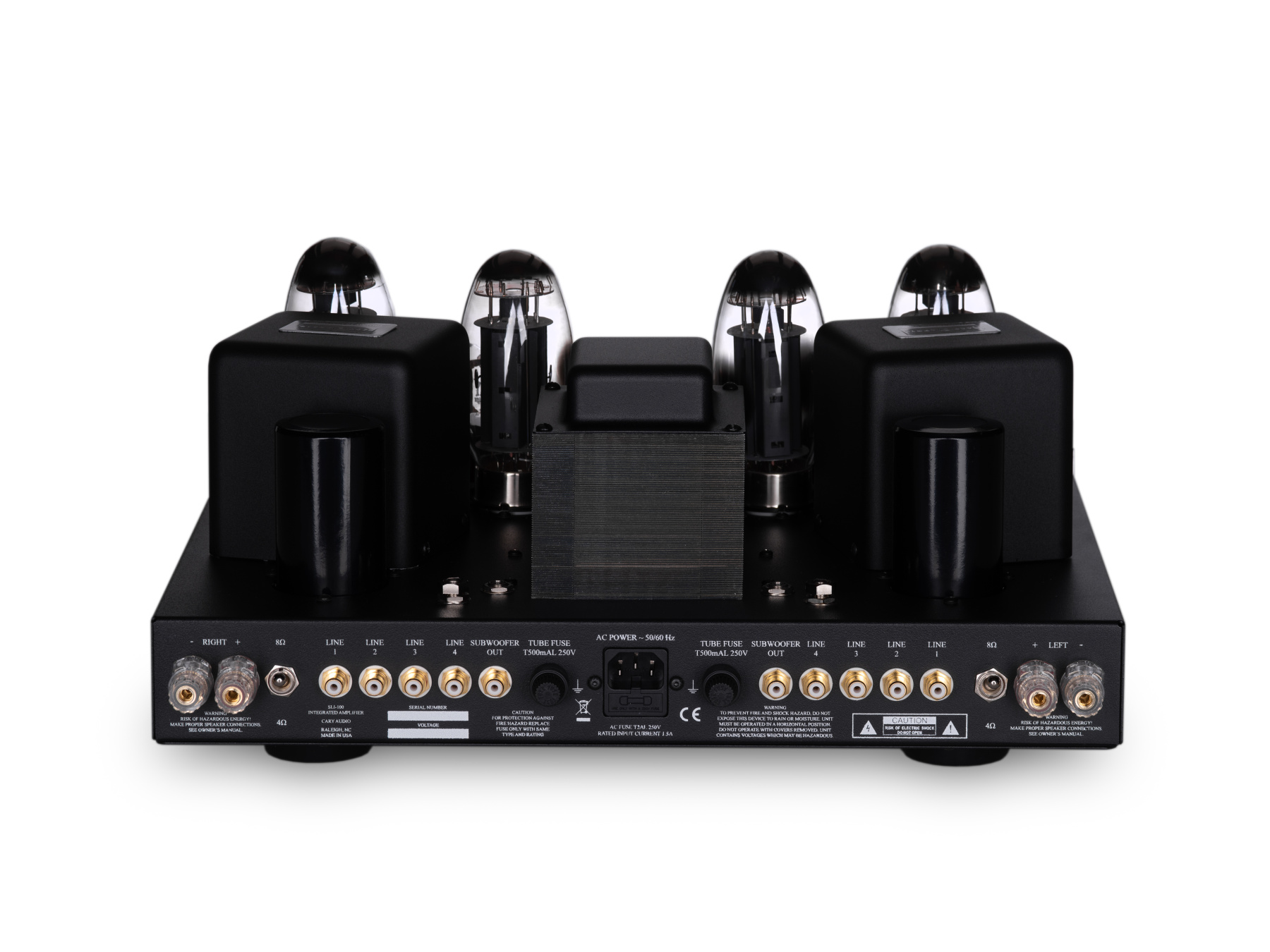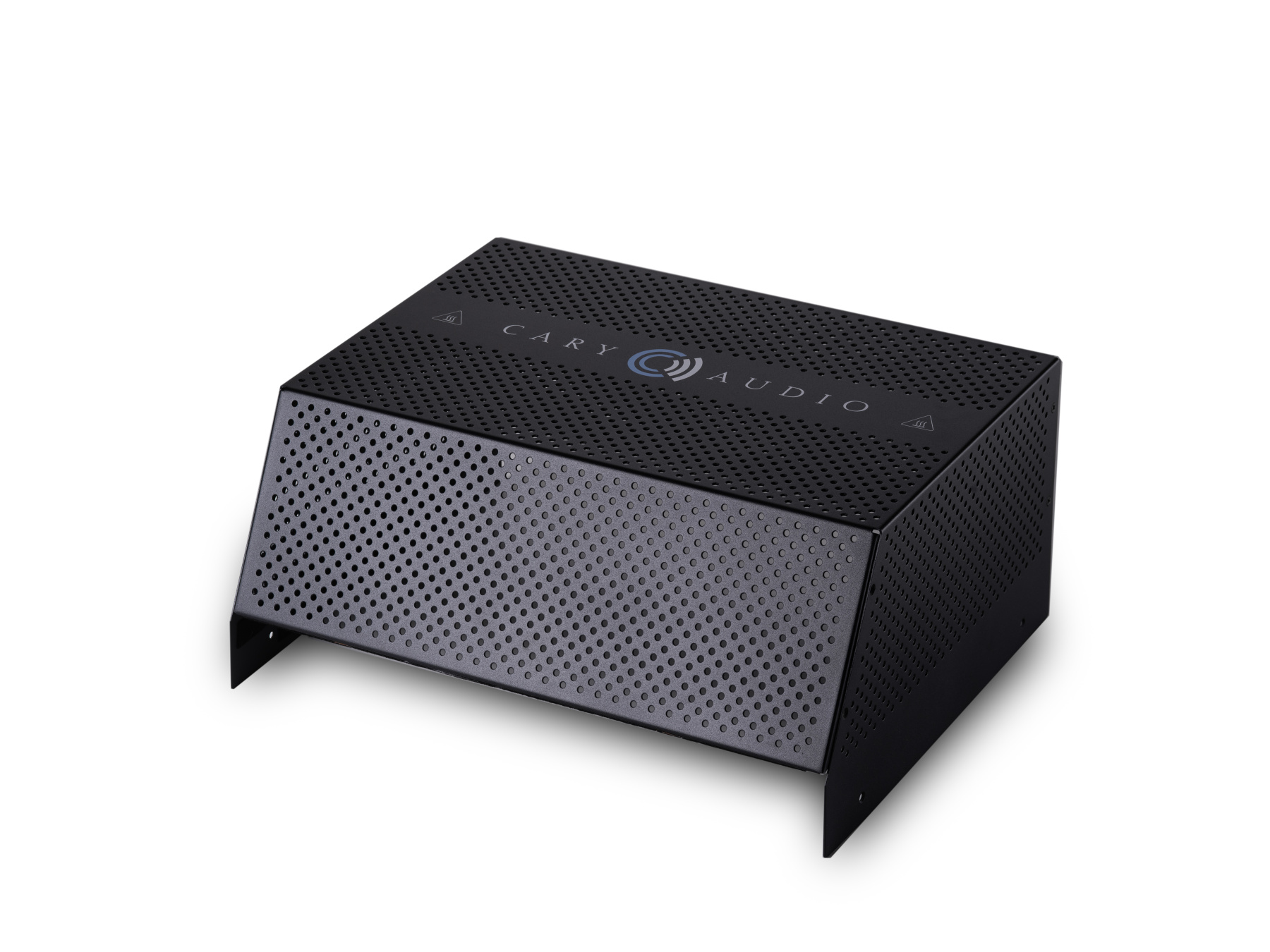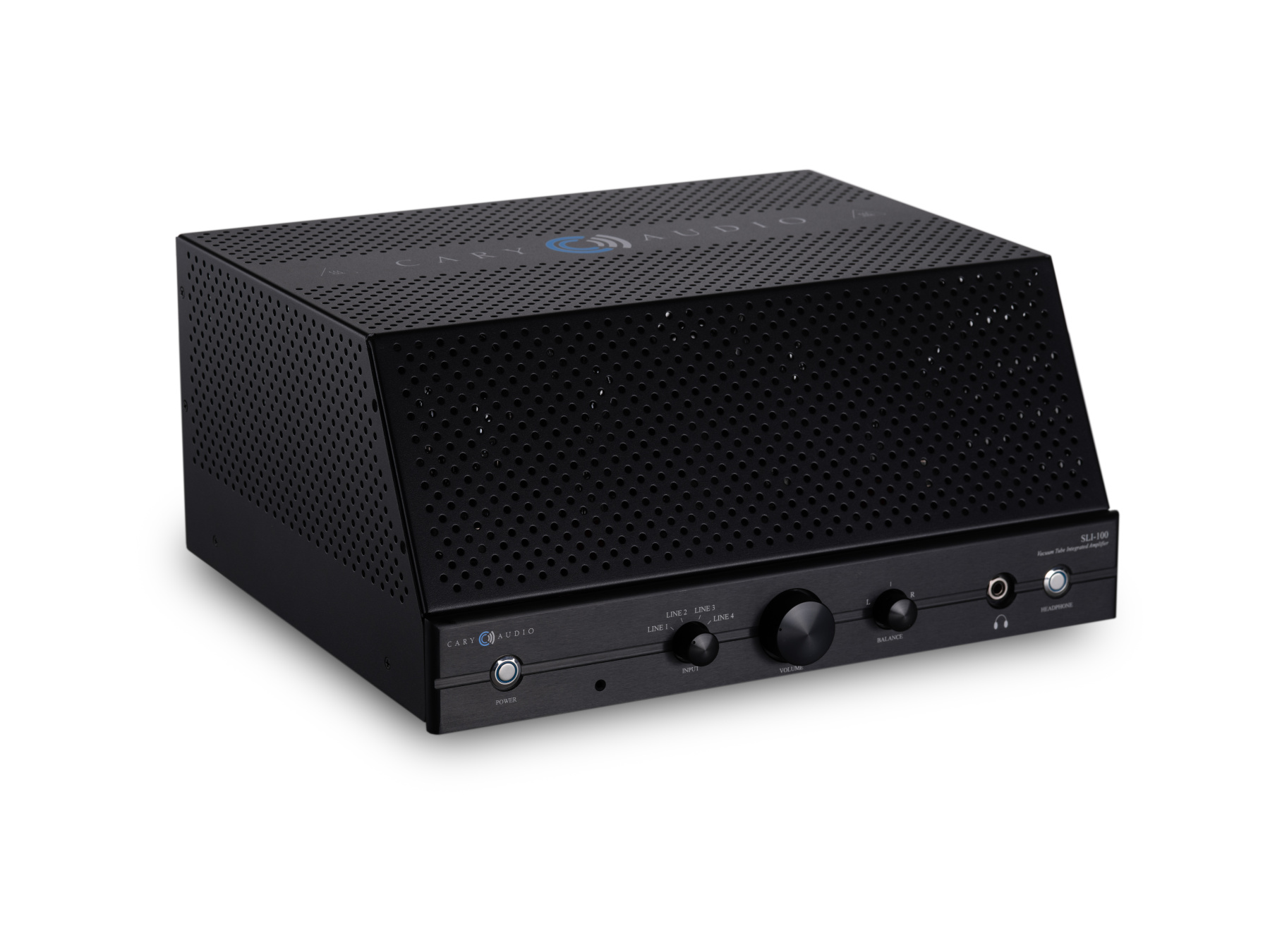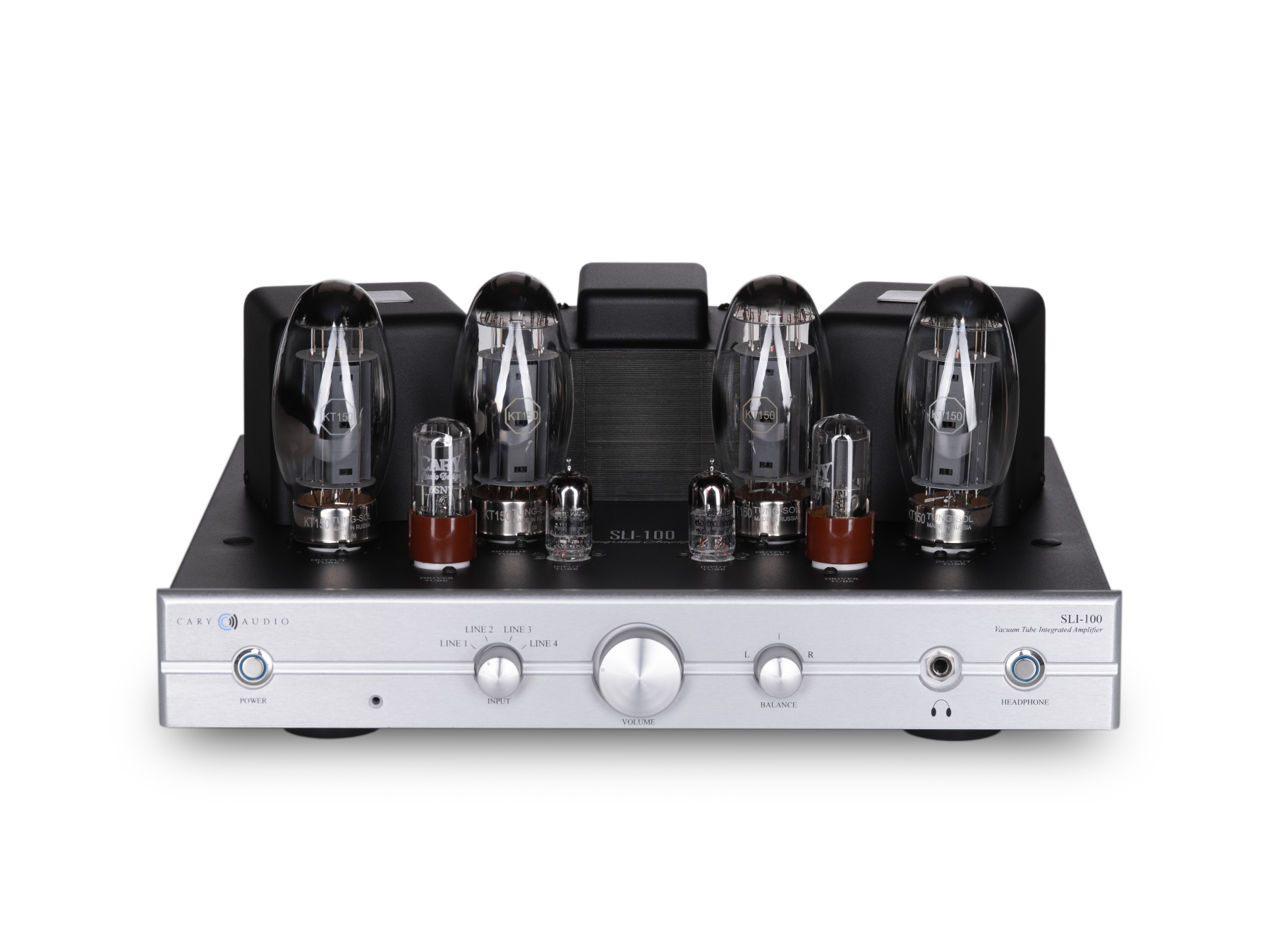Many thanks to Herb Reichert of Stereophile magazine for his thorough review of our new valve integrated amp. SLI-100 is a new baby and is so precious.
Herb’s review was published on Stereophile’s website on 13 December. Read it there or scroll down for a slightly abridged version. Cary Audio SLI-100 is priced at €6255 in the EU.
Cary Audio SLI-100 integrated amplifier
My Russian neighbor’s blind grandfather, Vlad, has very discriminating ears—but only when I tell him what to listen for. If I don’t, he just bitches about my choice of music. And he refuses to listen to “weak” American orchestras.
Not surprisingly, Vlad worships Mikhail Glinka. “Herb! Play Russlan and Ludmilla!” When he asks for “Pyotr Ilyich,” I groan and quietly put the vodka back in the freezer.
A week ago, after an intense back-and-forth about Stravinsky, Leonard Bernstein, Sergei Diaghilev, and the Ballets Russes, I persuaded Vlad to perform a blind comparison of two fairly similar push-pull tube amps: Rogue Audio’s Stereo 100 power amp ($3495), which uses KT120 tubes to output 100Wpc, and Cary Audio’s new SLI-100 integrated amplifier ($5995), which uses KT150 tubes to produce 100Wpc.
Through the Harbeth Monitor M30.2 speakers I played Stravinsky’s fierce mystery The Rite of Spring, in a recording by Valery Gergiev conducting the Kirov Orchestra (16-bit/44.1kHz FLAC, Decca/Tidal). I asked Vlad to tell me which amp—both operating in Ultralinear mode—reproduced Stravinsky with the greater ease and power.
Vlad jabbered for a couple of minutes—he didn’t seem to be focusing. Eventually, he got into it. After the Sacrificial Dance, I stopped and forced him to commit. Vlad swore on Trotsky’s grave that the second amp I’d played (the Cary SLI-100) was “more smooth and clear—just leave it—don’t change anything!” I was pleased. And, of course, the Russian Grandfather approved of Gergiev’s distinctly macho rendering of The Rite—”not like that messy Bernstein one!” Vlad knows that I favor Leonard Bernstein’s more poetically evocative interpretation with the New York Philharmonic, especially on “six-eye” vinyl (LP, Columbia Masterworks MS 6010).
Description
The Cary Audio SLI-100 ($5995) is an all-tube, stereo integrated amplifier that looks massive and businesslike. It’s finished in what appears to be an extremely durable, black, crinkle powder-coat with a large blue-and-white Cary logo stenciled atop its 8.8-lb tube cage. The SLI-100 measures 17.25″ W by 7.8″ H by 16″ D and weighs 42 lb without tube cage.
On the SLI-100’s rear panel are four pairs of single-ended line-level inputs (RCA), and right- and left-channel pairs of five-way binding posts for speaker cables. Adjacent toggle switches let you select between the 4 and 8 ohm taps on the output transformer’s secondary winding. A fifth pair of RCA jacks is labeled Subwoofer Output.

The front panel is simple: At far left is a Power button illuminated by a blue ring. To its right is a smallish, four-position Input knob. The big center knob is for Volume, and to its right is a small Balance knob (I love a balance control). Farther right is a ¼” headphone jack, and farthest right is another blue-ringed button that conveniently switches the SLI-100’s output between headphones and speakers.
Under the tube cage is Cary’s signature array of transformers and tubes. Instead of vintage-looking KT88 output tubes, as in Cary’s 80Wpc SLI-80 integrated, the 100Wpc SLI-100 sports modern-looking KT150s to squeeze another 20W of Ultralinear power into 8-ohm loads. (Strangely, while the SLI-80 has a switch that lets the user toggle between Triode and Ultralinear operation of its output tubes, the SLI-100 is Ultralinear only.) The SLI-100’s KT150s operate in class-AB1 with a fixed bias, and, according to the SLI-100’s webpage, with only 4dB of global negative feedback!
A few days after my night with Vlad, I thought, Damn! The blind Russian really nailed it. This thing sounds clear and nonmechanical.
Then, in preparation for writing this review, I studied that webpage. I discovered that the SLI-100 splits the signal phase for its push-pull output stage in a way hardly anyone uses anymore: the “split load” or cathodyne phase inverter. Even more than interstage transformers, I prefer the sound of split-load inversion because I believe I can feel its superior balance. I also believe that this better balance translates into what Vlad said: “more smooth and clear.” To my ears, split loads sound more relaxed and flowing than the long-tailed pair/dual-differential stages used in almost every other tube amp.

I read further, and noticed something else that probably contributed to my and Vlad’s impressions of more clear and smooth. The SLI-100’s voltage amplifier stage has a shunt-regulated push-pull (SRPP) architecture, but instead of the ubiquitous high-mu 12AX7 twin-triode tube, which is very low in transconductance, it uses the medium-mu, high-transconductance 6DJ8/6922—a nine-pin twin-triode tube (footnote 1) originally championed by Mike Moffat (formerly of Theta Digital, currently of Schiit Audio) and Roger A. Modjeski (of Music Reference/RAM Labs).
For our purposes here, it will suffice if you think of tube mu as a voltage-in/voltage-out ratio, and of transconductance as a tube’s sensitivity to small-scale signal fluctuations. High-mu, low-transconductance tubes like the 12AX7 are efficient voltage amplifiers, but to my ears tend to generalize, simplify, and skip or jump over small-scale signal information. In contrast, the transconductance of a 6DJ8 (11,000 micromhos) is almost 10 times that of the 12AX7 (1200–1600 micromhos), and, to my ears, transmits 10 times more texture and inner detail. The SLI-100’s 6DJ8 SRPP voltage amplifier is likely stable, quiet, and linear—but its sonic effect is like listening through an aural magnifying glass to instrument strings, vocal cords, and piano soundboards.
Listening
In evaluating an audio component, sequence is everything. Last month I wrote quite favorably about the above-mentioned Rogue Stereo 100. I’d had no previous experience at home with the amp’s KT120 output tubes, but ended up being impressed by the Stereo 100’s enjoyably neutral sound, especially in Triode mode from its 4 ohm taps. When I boxed up the big, black, 60-lb Rogue and installed Cary’s big, black, 50.8-lb SLI-100, I naturally wondered how similarly or differently they’d sound.
My formal comparisons began with “Allein! Weh, ganz allein! (Alone! Woe, all alone!),” an aria from Richard Strauss’s opera Elektra, with Birgit Nilsson in the title role, and Georg Solti conducting the Vienna Philharmonic (24/96 FLAC, Decca/Qobuz). I know Diana Krall and Joni Mitchell sing beautifully, but if you want to know if your hi-fi is really worth its full price, feed it something more demanding: like Nilsson singing Strauss. With only a day of break-in hours, the Cary SLI-100, driving the relatively insensitive (83dB/W/m) Harbeth P3ESRs from its 4-ohm taps, got me totally by the ears and started rearranging my audio-critical chromosomes.
The sound was both precise and easy flowing. Unfortunately, the little Harbeths choked noticeably in the high-energy, low-frequency opening, and gurgled some in the ensuing deep-bass passages. But O mein Gott! Nilsson’s irresistible powers throttled my soul, as Strauss’s opera force-fed high Teutonic sentiment and Reactionary Modernism directly into the dark parts of my mind.
Above 100Hz, the shoebox-sized Harbeths generated a smoothness and richness of tone that well expressed the poetic abilities of Strauss and Nilsson, but not the artistic and sonic force of Strauss’s Elektra. At low volumes (below 90dB peaks), Birgit Nilsson’s top octaves (the ones she owns) were exemplary in texture and tone. That was nice, but I wanted more Strausskraft!
Needing to hear what I was missing with the P3ESRs, I swapped in Harbeth’s larger two-ways, the Monitor M30.2s. Voilà! Having more clean energy in the 50–100Hz octave made a HUGE difference. More cone area and box volume made more bass, which in turn made bigger images in a bigger space, with more copious room tone. Into the M30.2s, the Cary integrated’s 100Wpc seemed more forceful than the Rogue amp’s 100Wpc. A difference in power-supply topology? This fine 1967 opera recording by Decca/London is by necessity big and powerful; the Cary SLI-100 and Harbeth M30.2s sailed easily, sang beautifully, and made timpani poundings something to look forward to.
Cary Audio SLI-100 integrated amplifier Page 2
I then played the first recording of the Sarasate I’d ever responded to, one I love and know well: by Ruggiero Ricci, with Pierino Gamba conducting the London Symphony Orchestra (16/44.1 FLAC, Decca/Tidal). This fantastic recording was first released in 1960, on one of the greatest LPs of all time: Decca SXL 2197. I’ve played it often on million-dollar hi-fis with some of the world’s finest cartridges, but even via Tidal streaming, Ricci’s violin tone remains the gold standard for tear-your-skin-off texture and supersaturated string tones. But after an hour of repeated plays, I realized that Ruggiero’s Carmen Fantasy on Tidal into Schiit’s Yggdrasil Analog 2 DAC feeding the Cary SLI-100 via Triode Wire Labs Spirit interconnects and driving the Harbeth Monitor M30.2s via Auditorium 23 speaker cables was not quite tearing my skin off. For that, I need the LP. But it did speak volumes about the quality of my Cary-Harbeth pairing, which delivered almost the full-intensity Decca midrange, plus the searing beautiful highs. The masterful subtleties of Ricci’s playing were easy to discern and savor.
Fully intoxicated, I now craved master violinist Joseph Szigeti playing his buddy Béla Bartók’s Romanian Folkdances, arranged by Zoltán Székely, with the composer at the piano (16/44.1 FLAC, Hungaroton/Tidal). The SLI-100 displayed Szigeti’s extreme sweet/sour, dark/light lyricism in a manner I thought impossible without 300B or 211 triode tubes. Bartók’s piano and Szigeti’s violin were relatively close-miked in this recording from January 1930, but vividly present and musically intense. I thought I could hear inside Szigeti’s violin.
Performances like these masterpieces by Mutter, Ricci, and Szigeti are why our world needs fine amplifiers—like the Rogue Stereo 100, the Pass Labs XA25, the Cary SLI-100—and loudspeakers they can drive. Via the Harbeth M30.2s, Mutter’s art ascended highest with the Pass Labs XA25, Ricci’s violin was its most skin-tearing with the Rogue Stereo 100 wired in Triode, and Szigeti playing Bartók produced more tear-jerking texture and presence when the Harbeths were powered by the Cary SLI-100.

With headphones
My favorite headphone amp is no headphone amp. I know it’s illegal, but I like connecting headphones directly to the speaker binding posts on the backsides of power amplifiers. The resulting combination of high-gain, high-voltage, direct connection to a big power supply and extra-low-output impedance seems to trick headphones into doing fantastic things, the most obvious of which are preternatural transparency and super-duper density. When the stars align, the sound seems to leave the headset entirely to float, unsettlingly ghostlike, out into the room around me. This surprising level of out-of-head transparency is very exciting, but takes some getting used to.
When I played Collocutor’s Black Satin EP (16/44.1 FLAC, On the Corner/Tidal), the Cary SLI-100 did all of those exciting “illegal” things—with HiFiMan’s Susvara headphones ($6000) connected not to the speaker outputs, but to the Cary’s front-panel headphone jack! This surprised and impressed me. Integrated amps usually have headphone amps that sound like afterthoughts.
Needing more evidence, I put on Vlad the blind Russian’s favorite: The Rite of Spring, with Gergiev conducting the Kirov, and listened again. It sounded much more see-inside transparent through the Susvaras than from the Harbeth M30.2s. The Rite completed, I hauled out my secret four-pin, balanced-to-twin-bananas headphone cable and connected the Susvaras to the SLI-100’s speaker binding posts, switched to the 4-ohm tap. The purity, transparency, and tactility of the Cary exploded into my head. It was some of the best headphone sound I’ve ever experienced.
Next, with the Susvaras still connected to the speaker outputs, I played “Félenko Yéfé,” from Momo Wandel Soumah’s Afro Swing (16/44.1 FLAC, Fonti Musicali/Tidal), which was also pure and transparent. I could not tell that the sounds were coming from the headphones—at all! The title track of Black Satin was solid and present in a way I doubt many of us have experienced. I repeat: The pure, coherent sounds emanating from the Susvaras were not stuck inside my head. They were out in the room. Their transparency exceeded anything I have experienced from floor-standing speakers at any price.
Hoping to substantiate these results, I switched to my reference headphones, JPS Labs’ Abyss AB-1266 Phi ($4495). Guess what? Corporeality and transparency increased even more. Bass was superpowerful. Saxophones and percussion sounded as I imagine they did coming from the monitors in the studio. I felt I was hearing everything the mastering engineer heard—maybe more. As a headphone amp, the Cary’s speaker outputs had no equal.
Or did they? When I switched from the SLI-100’s speaker posts to its front-panel headphone jack, I thought the Kirov Orchestra was playing in a darker, less transparent space. I thought maybe the instruments seemed lighter in weight, and that maybe the highs were less extended. But if any of that was true, the differences were extremely slight. Overall, the SLI-100’s headphone output was powerful and delicate and musically effective in ways I had never before experienced from the headphone jack on the front of an integrated amplifier. Later, Cary Audio’s president and design chief, Billy Wright, told me that the SLI-100’s headphone output is taken from its own tap on the output transformer’s secondary winding.
Conclusions
The Cary Audio SLI-100 brings something uniquely satisfying to the high-powered tube-amp party. Until I listened to it for this review, I’d thought we needed low-power, directly heated triode tubes to unveil this much purity, presence, vivid texture, and colorful tone. Actually, we do—but the SLI-100 sounded more like a high-quality single-ended 211/845 amp than it had any right to. I enjoyed every minute I spent with it. Highly recommended.





